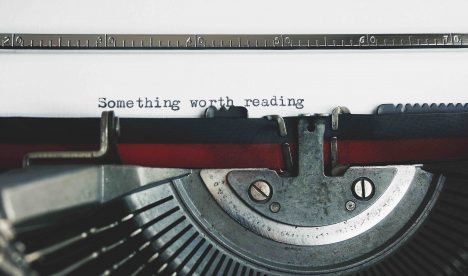
You’ve written a manuscript. Congratulations! It’s an incredible achievement, requiring a huge amount of dedication. So, that’s the hard part done. But what now?
Depending on how you plan to publish, there’s a long editing process to go through. But once you’ve tinkered, had a few people read it, and you’re happy everything is in order, there’s one very last thing to do:
Get a professional proofreader to go over your manuscript with a fine-tooth comb!
In order to understand what a proofreader will do for your manuscript, first let’s explore what they won’t do. A proofreader will not address plot holes and gaps, or any problems with characters. They won’t perform the heavy cutting, reshaping, and rearranging of text which are often seen during developmental editing.
But a proofreader will make sure your manuscript is free of spelling mistakes, grammar errors, missing punctuation and anything else that could ruin a reader’s enjoyment. We’ll perform simple rewrites to correct sentence structure or remove any ambiguity. And we’ll tighten any verbose sections.

A proofreader will look at the word count of your manuscript and estimate the time it will take them to edit. It’s important to remember this is a really rough estimate. The time necessary depends on the complexity of the manuscript and how many mistakes the proofreader needs to correct.
Proofreaders usually read through a manuscript three times. The first read will take up the majority of the time and is the phase where I correct all of the spelling, grammar and punctuation errors. The second time through the manuscript, I review my edits, refine them, and give any necessary explanations for those edits. The final read takes place after you’ve reviewed the corrections, and it is used to make sure neither of us has accidentally injected errors.
I consistently edit 1000 words an hour, regardless of the subject. So, a 100,000-word manuscript would likely take 90-100 hours for the first two phases of the edit and an additional 10-20 hours for the final phase, after your review. With the last manuscript I edited, I proofread a few pages to serve as a sample of my work and as a basis for time and cost estimates.
A proofreader will make sure your manuscript follows a consistent style. But what exactly does style mean? Style is the rules of spelling, capitalisation, hyphenation, and abbreviations; punctuation; and the use of numbers. A proofreader will refer to a dictionary and a style manual (also called a stylebook or style guide) to achieve consistency in style.
There are a lot of dictionaries to choose from and several style manuals. Most book authors, of both fiction and non-fiction, use The Chicago Manual of Style (CMOS) as their style manual and some form of Merriam-Webster Dictionary.
The important thing is not so much the style manual and dictionary chosen but adhering to only one of each. Style manuals and dictionaries actually disagree on many things, so a proofreader will use only those you’ve used.
Sometimes, in addition to an already published style manual such as CMOS, a business will create an in-house style guide. Typesest has one customer who has created a 66-page style manual to cover everything from fonts used and the proper colour for subheadings to the right word to use when referring to clients or staff.

While writing their book, many authors create a style sheet. A style sheet is basically the same as an in-house style guide, but is usually just one or two pages listing any unusual capitalisations, italics, hyphenations, and spellings. For instance, if you prefer to capitalise all job titles, such as Proofreader, or want to use a hyphen in on-site. And, in the case of fiction, the spelling of a character’s name or the name of a business can be listed on a style sheet.
If you haven’t written a style sheet, a proofreader will create one so that when the manuscript is returned, you’ll see exactly how they’ve handled words.
READ MORE: 7 ways hiring a proofreader can save your business
English is constantly evolving with words changing, new words appearing, and new forms of usage occurring. Take, for example, the word onsite. In the past decade, it has appeared in dictionaries as on site, on-site, and its current form in Macquarie Dictionary, onsite. In its seventeenth edition published in 2017, CMOS recognised they as a gender-neutral singular pronoun and now recommends email with no hyphen and internet lowercase.
Professional proofreaders follow what changes are occurring or being discussed, and if they’re ever in doubt, they’ll research a word to confirm it’s being used correctly.
Sometimes, the boundary between copyediting and proofreading can blur. Your book may be in excellent shape in terms of spelling, punctuation and grammar, but there will be flaws in logic and flow that everyone else who’s edited it has missed.
While proofreading a crime novel recently, I realised the author had written that the blood spatter was on the wrong side of a vehicle. (Blood spatter follows the trajectory of the force or, in this case, the bullet.) And a coffee pot was in one place in one chapter, and 60 pages later it was in another room in a closet, without having been moved by a character.

While proofreading, I keep in mind that the work I’m looking at is not my own. It belongs to the author. The last thing I want to do is make your manuscript sound like I’ve written it. The goal is to finesse your words and make their meaning clearer. Typeset’s motto is, “ Make the world a better place for readers everywhere” and it’s my number one goal.
In a face-to-face conversation, if you notice a puzzled or clueless look on your audience’s face, you can rephrase and try again. With writing, you don’t get the luxury of such immediate feedback. You don’t get another chance to explain yourself; your reader will simply stop reading and won’t recommend anyone else read it.
It’s well worth the time and expense of hiring a professional proofreader to ensure your manuscript gets read and recommended!
Need a manuscript proofreader? Get in touch with the Typeset team. We’re in the US, Australia, and the UK – and we’re happy to help.
